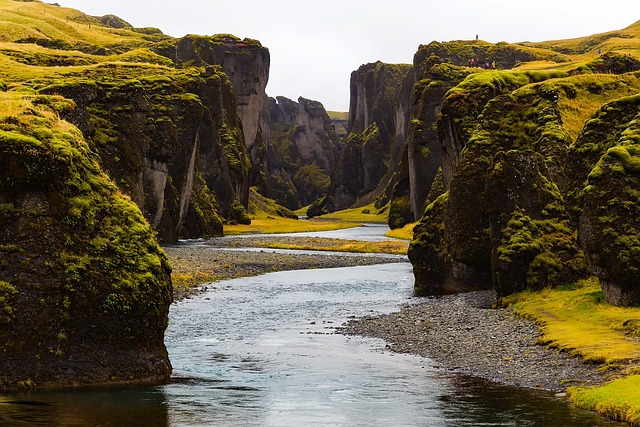
A ravine is an abrupt slope in a terrain that is formed for different reasons.
abrupt slope
A ravine is an abrupt drop in the surface of a natural area of land. It can arise from different causes, some of which we point out below:
* due to a movement of tectonic plates . This usually occurs in places near areas where one plate sinks below the edge of another (known as a subduction zone );
* due to the erosion caused by a stream, torrent or river. In this specific case we can talk about the concept of overhang ;
* as a result of the depression between two normal faults that are oriented parallel, which is known by the terms graben or tectonic graben .
It is possible to find ravines in many regions . In the Death Valley area (known in Spanish as Valle de la Muerte ), which is located in the Mojave Desert ( United States ), there are numerous ravines.
Canyoning
Canyoning , on the other hand, is a sport that consists of advancing through ravines and river beds, using different techniques. This practice involves moving on foot in some sections and swimming in others.
Although canyoning attracts many people from different backgrounds, it is important to have a certain degree of experience in sports activities and a good affinity in the relationship with nature , both with the terrain and with inclement weather. If we get tired easily or the sun bothers us too much, for example, it is recommended to start with short stretches to get used to it little by little.
Furrow in the ground
A ravine, on the other hand, is the furrow that a current of water generates in the earth . Water, in this framework, causes a break in the surface. The depth of a ravine like this can reach 50 meters. If it is formed in a limestone area, it is normal for it to be linked to a lapiaces , an irregular rock surface that has also been eroded by water, leaving various holes and points.
At this point we must return to the concept of ravine , since it is with this term that the erosion caused by this type of ravine is described. The origin of the water can be rain or runoff (or runoff ), a current that arises when a channel, natural or artificial, is overflowed. It is usually seen as a "sheet" of water that moves over the surface and is measured in millimeters.
In general, drooping occurs in soils whose composition consists mainly of impermeable and soft materials. Given the position and direction of the water, its action occurs on the surface and can be seen with the naked eye in the form of grooves or indentations. We must add that the term ravine is only used when the eroded area is of considerable size; For the smaller ones there are other names, such as regatos, regueros and gullies .

Canyoning consists of traveling through ravines, with sections on foot and others swimming, depending on the terrain.
Lima District
Barranco is also the name of a district of Lima , the capital of Peru . This neighborhood is characterized by its bohemian spirit, with numerous art galleries. Due to its attraction for tourism , which includes points of interest such as La Ermita , the Bridge of Sighs and Plaza San Francisco , Barranco has an abundance of hotels, restaurants and bars.
Canyons
In Portugal , finally, Barrancos is a town that belongs to the district of Beja and borders Spain . Its area of just over 168 square kilometers is inhabited by about 1,700 people.
